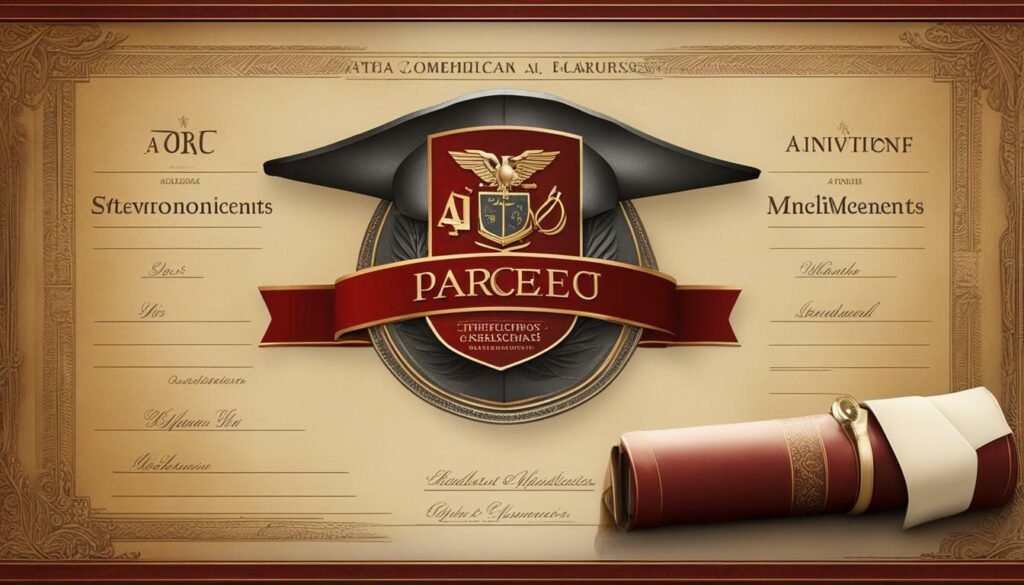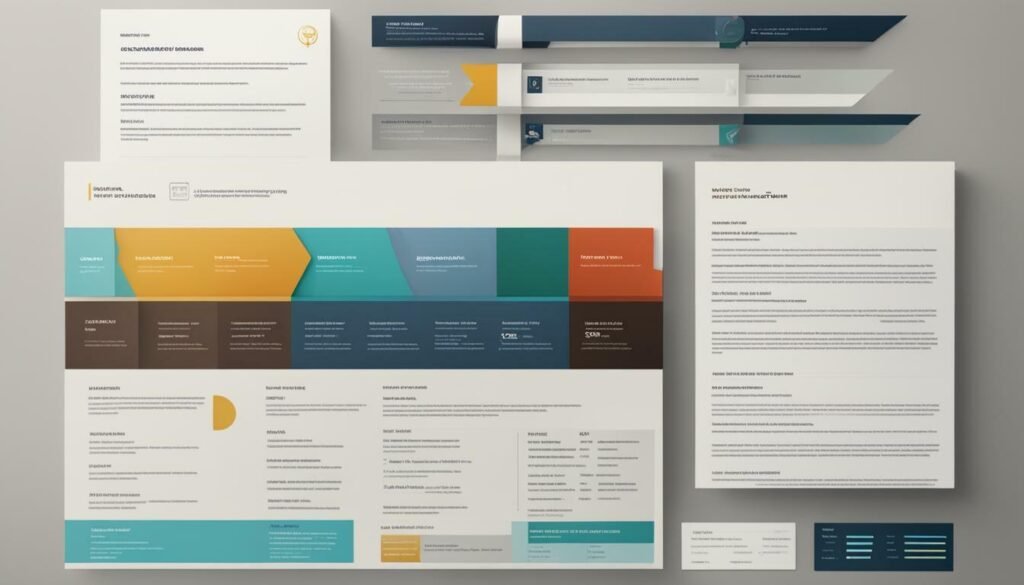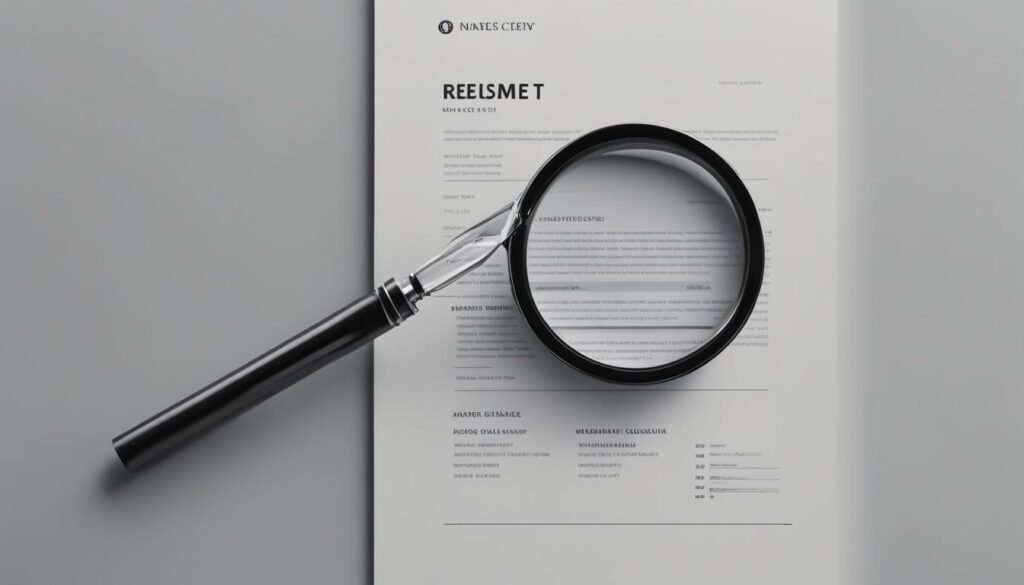Writing a resume is a crucial step in advancing your career, and by following these 7 basic steps, you can craft an impressive resume that stands out to potential employers.
When writing a resume, it is important to follow seven key steps to ensure success. The first step is to decide on the resume format, choosing one that suits your circumstances and is easily readable. The next step is to highlight your contact information, including your full name, email address, and phone number, while avoiding sharing personal information like age or marital status. The third step is to include a resume summary or career objective, summarizing your relevant experience and highlighting why you are the best candidate for the position. The fourth step is to describe your professional achievements, responding directly to the job requirements and showcasing your skills and accomplishments. The fifth step is to include the highest level of education on your resume, providing details of the school, degree, and dates of attendance. The sixth step is to list your relevant skill set, choosing skills based on the job requirements and using both singular keywords and full phrases. Finally, consider adding additional sections to your resume, such as language skills, volunteering experience, or hobbies and interests, to make it more comprehensive and relevant. Proofreading your resume for errors is also crucial to ensure a successful application.
Key Takeaways:
- Choose the right resume format that suits your circumstances and is visually appealing.
- Highlight your contact information accurately, including your full name, email, and phone number.
- Create a compelling resume summary or career objective that showcases your experience and suitability for the position.
- Showcase your professional achievements to demonstrate your skills and accomplishments.
- Include your education details, providing relevant information about the institution, degree, and dates of attendance.
Step 1: Choose the Right Resume Format
The first step in creating a compelling resume is to choose the most suitable format that effectively showcases your skills and qualifications. There are several common resume formats to consider:
- Reverse-chronological: This format lists your most recent experience first, making it ideal for job seekers with a solid work history.
- Functional: This format focuses on your skills and abilities rather than your work history, making it suitable for career changers or those with limited experience.
- Combination: As the name suggests, this format combines elements of both reverse-chronological and functional formats, allowing you to highlight your skills while still providing a chronological work history.
When choosing a format, consider your individual circumstances and the industry you are applying to. Think about how you can best present your qualifications in a way that will catch the employer’s attention. Remember, it’s important to keep your resume visually appealing and easy to read.

Resume Format Comparison
| Format | Pros | Cons |
|---|---|---|
| Reverse-chronological | Highlights your work experience and career progression | May emphasize employment gaps |
| Functional | Focuses on skills and abilities rather than work history | Does not provide a clear chronological timeline |
| Combination | Allows you to showcase both skills and work history | Can be more challenging to structure and format |
Remember, the format you choose should effectively highlight your qualifications and appeal to potential employers. Consider your unique situation and select the format that best presents your skills and experience.
Step 2: Highlight Your Contact Information
Ensure prospective employers can easily reach you by prominently featuring your contact information, including your full name, email address, and phone number. Providing accurate and up-to-date contact details is essential to the hiring process, as it allows employers to reach out to you for interviews or further discussion.
To format your contact information effectively, consider placing it at the top of your resume, either centered or aligned to the left. Use a font size slightly larger than the rest of the text to make it stand out. Include your full name, using a professional and easily readable font.
When including your email address, make sure it is professional and does not contain any unprofessional or personal information. Additionally, double-check that your phone number is accurate and active, as employers may try to contact you directly.
| Contact Information | Resume Formatting Guidelines |
|---|---|
| Full Name | Use a professional and easily readable font. |
| Email Address | Ensure it is professional, without any unprofessional or personal information. |
| Phone Number | Double-check that it is accurate and active. |
By highlighting your contact information in an organized and visually appealing manner, you can increase the chances of employers reaching out to you for potential job opportunities.

Capture the attention of hiring managers by crafting a compelling resume summary or career objective that showcases your relevant experience and highlights your unique skills. This section of your resume serves as a brief introduction, allowing employers to quickly understand your qualifications and suitability for the position.
A resume summary is a concise paragraph that summarizes your professional background, skills, and achievements. It is an effective way to highlight your most notable accomplishments and demonstrate your value as a candidate. Make sure to tailor your summary to the specific job you are applying for, emphasizing skills and experiences that directly align with the requirements of the role.
On the other hand, a career objective is a statement that outlines your career goals and ambitions. It is particularly useful for entry-level candidates or individuals looking to transition into a new field. Your career objective should be clear and focused, demonstrating your passion and commitment to the industry you wish to pursue.
When crafting your resume summary or career objective, remember to keep it concise and compelling. Use strong action words and quantifiable achievements to demonstrate your impact in previous roles. By placing this section at the beginning of your resume, you will grab the attention of hiring managers and encourage them to continue reading.

| Resume Summary | Career Objective |
|---|---|
| Experienced marketing professional with a track record of successfully implementing digital marketing campaigns that resulted in a 20% increase in website traffic and a 15% boost in sales. | Motivated and detail-oriented graduate with a passion for environmental sustainability seeking an entry-level position in a renewable energy company to contribute to a greener future. |
| Results-driven sales manager with 10 years of experience in exceeding sales targets and leading high-performing teams. Proven ability to develop and implement effective sales strategies, resulting in a 30% increase in revenue. | Goal-oriented IT professional with a strong technical background and a desire to leverage my skills in software development to drive innovation and contribute to the success of a cutting-edge technology company. |
Step 4: Highlight Your Professional Achievements
Make your resume stand out from the competition by highlighting your professional achievements that directly respond to the specific job requirements. Employers want to see tangible results and evidence of your skills and accomplishments. By showcasing your achievements, you demonstrate your ability to deliver results and make a positive impact in the workplace.
When describing your professional achievements, use clear and concise language to effectively communicate your accomplishments. Quantify your achievements whenever possible by including numbers, percentages, or other measurable data. This helps to provide context and credibility to your accomplishments.
Consider using bullet points to present your achievements in a visually appealing and easy-to-read format. This allows hiring managers to quickly scan your resume and identify your key accomplishments. Use action verbs to start each bullet point and focus on the outcomes and impact of your actions.
| Achievement | Description |
|---|---|
| Increased sales by 20% within six months | Implemented new sales strategies resulting in a significant increase in revenue |
| Improved customer satisfaction rating by 15% | Implemented customer service training program resulting in higher customer satisfaction |
| Streamlined manufacturing process, reducing production time by 30% | Implemented new production methods leading to improved efficiency and cost savings |
Remember to tailor your achievements to the specific job you are applying for. Analyze the job description and identify the key skills and qualifications required. Then, highlight your achievements that align with those requirements. This demonstrates your suitability for the position and helps you stand out as a qualified candidate.

- Highlight your professional achievements to make your resume stand out.
- Quantify your achievements with measurable data.
- Use bullet points and action verbs to present your achievements.
- Tailor your achievements to the specific job requirements.
Step 5: Include Your Education Details
Demonstrate your educational qualifications by including the highest level of education you have attained on your resume, ensuring to provide essential details. Employers value education as it showcases your knowledge and commitment to personal and professional growth. Here are some key points to consider when including your education details:
- Include relevant information: Mention the name of the institution where you obtained your degree or certification. Provide the name of the degree or certification, along with any specializations or majors. Indicate the dates of attendance or expected graduation.
- Order your education section: Typically, the education section is listed after your professional experience. However, if you are a recent graduate or your education is your strongest asset, you can place it before your work experience.
- Highlight academic achievements: If you excelled academically or received any notable awards or honors, consider mentioning them. However, keep in mind that relevancy is key, so only include achievements that are directly related to the position you’re applying for.
Here is an example of how your education section could be formatted:
| Education | Institution | Dates |
|---|---|---|
| Bachelor of Science in Computer Science | ABC University | August 2015 – May 2019 |
| Certification in Digital Marketing | XYZ Academy | June 2020 |
Remember to always tailor your education details to the specific job requirements and only include information that is relevant to the position you are applying for. By showcasing your educational background, employers can assess your qualifications and potential suitability for the role.

In today’s digital age, online courses and certifications have become increasingly popular and relevant to employers. If you have completed any online courses or obtained industry-specific certifications, you can include them in your education section or create a separate section for “Professional Development” or “Additional Training.”
Highlight the name of the course, the organization or platform from which you obtained it, and any relevant certifications or badges earned. This demonstrates your commitment to continuous learning and professional growth.
Step 6: Showcase Your Relevant Skill Set
Showcase your skills and competencies by carefully selecting and listing your relevant skill set, aligning them with the specific job requirements. This step plays a crucial role in demonstrating your qualifications and suitability for the desired position. When including skills on your resume, ensure that they directly relate to the job you are applying for, as this will make your application stand out.
Start by identifying the key skills and abilities required for the role. Look closely at the job description and make a note of any specific technical or soft skills mentioned. Then, review your own experience and qualifications to determine which skills you possess that match these requirements. This will help you create a tailored list of skills that are most relevant and important for the position.
When listing your skills, consider using a combination of singular keywords and full phrases. This will help to optimize your resume for applicant tracking systems (ATS) used by many employers to scan and filter resumes. Incorporating both types of keywords ensures that your resume will make it through the initial screening process and reach the hands of hiring managers.
Example:
| Technical Skills | Soft Skills |
|---|---|
| Proficient in Microsoft Office Suite | Excellent communication skills |
| Experience with HTML and CSS | Strong problem-solving abilities |
| Familiarity with Adobe Photoshop | Effective time management |
By showcasing your relevant skill set in a clear and organized manner, you demonstrate to potential employers that you have the necessary qualifications to excel in the role. Remember to tailor your skills section for each application, highlighting the skills that are most sought after in the specific industry and position you are targeting. This targeted approach will greatly increase your chances of catching the attention of hiring managers and securing an interview.

Enhance the depth of your resume by considering additional sections that provide a holistic view of your qualifications and interests. These sections allow you to showcase your skills and experiences beyond the traditional resume format, giving potential employers a more comprehensive understanding of your capabilities.
One example of an additional section to include is language skills. If you are fluent in multiple languages, this can be a valuable asset in today’s globalized job market. List the languages you speak and indicate your level of proficiency. This demonstrates your ability to communicate effectively with diverse populations and potentially opens up opportunities for international positions.
If you have relevant volunteering experience, you can create a separate section to highlight this. Volunteering demonstrates your commitment to making a positive impact and can showcase transferable skills such as teamwork, leadership, and problem-solving. Provide details about the organizations you have volunteered with and the roles and responsibilities you took on.
| Hobbies and Interests | Skills Demonstrated |
|---|---|
| Playing a musical instrument | Dedication, discipline, creativity |
| Participating in team sports | Collaboration, communication, leadership |
| Volunteering at a local shelter | Empathy, compassion, problem-solving |
Lastly, consider adding a section for hobbies and interests. While this may seem unrelated to your professional qualifications, it can provide insight into your personality, values, and potential cultural fit within an organization. Choose hobbies and interests that are relevant and showcase transferable skills. For example, if you play a musical instrument, it demonstrates discipline and creativity.

By including these additional sections, you can create a more well-rounded resume that goes beyond simply listing your work experience and education. Remember to tailor these sections to the specific job you are applying for, focusing on the skills and experiences that align with the position. Taking the time to consider additional sections can significantly enhance your chances of standing out to potential employers and landing the job you desire.
Proofread Your Resume
Before submitting your resume, take the time to carefully proofread it, eliminating any typos, grammatical errors, or formatting issues that may undermine your professionalism. A well-proofed resume reflects attention to detail and showcases your commitment to producing high-quality work. Follow this resume writing checklist to ensure your document is error-free and ready to impress potential employers.
- Check for spelling and grammar mistakes: Use a spell-check tool to identify any misspelled words or typos. Additionally, read your resume carefully to catch any grammatical errors or awkward sentence structures.
- Review formatting and consistency: Pay attention to the overall layout and formatting of your resume. Ensure that headings, fonts, and bullet points are consistent throughout. Double-check that all dates, job titles, and contact information are accurate.
- Consider readability: Make sure your resume is easy to read by using clear and concise language. Break up large blocks of text into smaller paragraphs or bullet points to improve readability.
- Get a second opinion: Ask a trusted friend, family member, or mentor to review your resume. Fresh eyes can often catch mistakes or offer suggestions for improvement.
By taking the time to thoroughly proofread your resume, you can present yourself as a polished and professional candidate. Remember, a small error overlooked by you may be noticed by potential employers, so it’s essential to ensure your resume is error-free before submitting it.

| Common Resume Mistakes | How to Avoid Them |
|---|---|
| Spelling and grammatical errors | Use a spell-check tool and carefully review your document |
| Inconsistent formatting | Ensure headings, fonts, and bullet points are consistent throughout |
| Cluttered layout | Organize your resume with clear sections and ample white space |
| Missing contact information | Include your full name, phone number, and email address |
| Overused buzzwords or cliches | Use specific and descriptive language to showcase your skills and experience |
Conclusion
By following these 7 basic steps to writing a resume, you can create a compelling document that impresses hiring managers and boosts your chances of landing your dream job. When writing a resume, it is important to follow a structured approach to ensure success. Begin by choosing the right resume format that suits your circumstances and is visually appealing.
Next, highlight your contact information, including your full name, email address, and phone number, while avoiding sharing personal details like age or marital status. Craft a resume summary or career objective that effectively summarizes your experience and highlights why you are the best candidate for the position.
Don’t forget to include your professional achievements, aligning them with the job requirements and showcasing your skills and accomplishments. Provide details of your education, including the institution, degree, and dates of attendance. Showcase your relevant skillset by selecting skills based on the job requirements, using both singular keywords and full phrases.
Consider adding additional sections to your resume, such as language skills, volunteering experience, or hobbies and interests, to make it more comprehensive and relevant. And finally, proofread your resume thoroughly to ensure a polished and error-free document.
Following these steps will ensure your resume stands out from the competition and increases your chances of securing an interview. Good luck with your job search!
FAQ
What are the 7 basic steps to writing a resume successfully?
The 7 basic steps to writing a resume successfully are: choosing the right resume format, highlighting your contact information, crafting a resume summary or career objective, highlighting your professional achievements, including your education details, showcasing your relevant skill set, considering additional sections, and proofreading your resume.
How do I choose the right resume format?
When choosing the right resume format, consider your circumstances and choose one that is easily readable. The format should be visually appealing and suit the job you are applying for.
What contact information should I highlight on my resume?
It is important to include your full name, email address, and phone number on your resume. However, avoid sharing personal information like age or marital status.
Should I include a resume summary or career objective?
Yes, including a resume summary or career objective is recommended. It allows you to summarize your relevant experience and highlight why you are the best candidate for the position.
How do I highlight my professional achievements on my resume?
To highlight your professional achievements, respond directly to the job requirements and showcase your skills and accomplishments. Quantify your achievements whenever possible and provide specific examples.
How should I include my education details on my resume?
Include the highest level of education you have attained, providing details of the school, degree, and dates of attendance. Be sure to include any relevant certifications or additional training.
What should I consider when showcasing my relevant skill set?
When showcasing your relevant skill set, choose skills based on the job requirements. Use a combination of singular keywords and full phrases to effectively communicate your abilities.
Should I include additional sections on my resume?
Yes, consider adding additional sections such as language skills, volunteering experience, or hobbies and interests to make your resume more comprehensive and relevant to the position you are applying for.
Why is proofreading my resume important?
Proofreading your resume is crucial to ensure a successful application. It helps you catch any errors or inconsistencies and ensures that your resume is polished and professional.
Are LinkedIn Resume Writers More Effective Than Writing a Resume Yourself?
Are linkedin resume writers worth it? Many individuals question whether hiring professionals to write their LinkedIn resumes is more effective than doing it themselves. While self-writing allows for personal touches, LinkedIn resume writers have expertise in optimizing profiles and using industry-specific keywords to stand out. With their knowledge and experience, they can create resumes that get noticed by potential employers.
